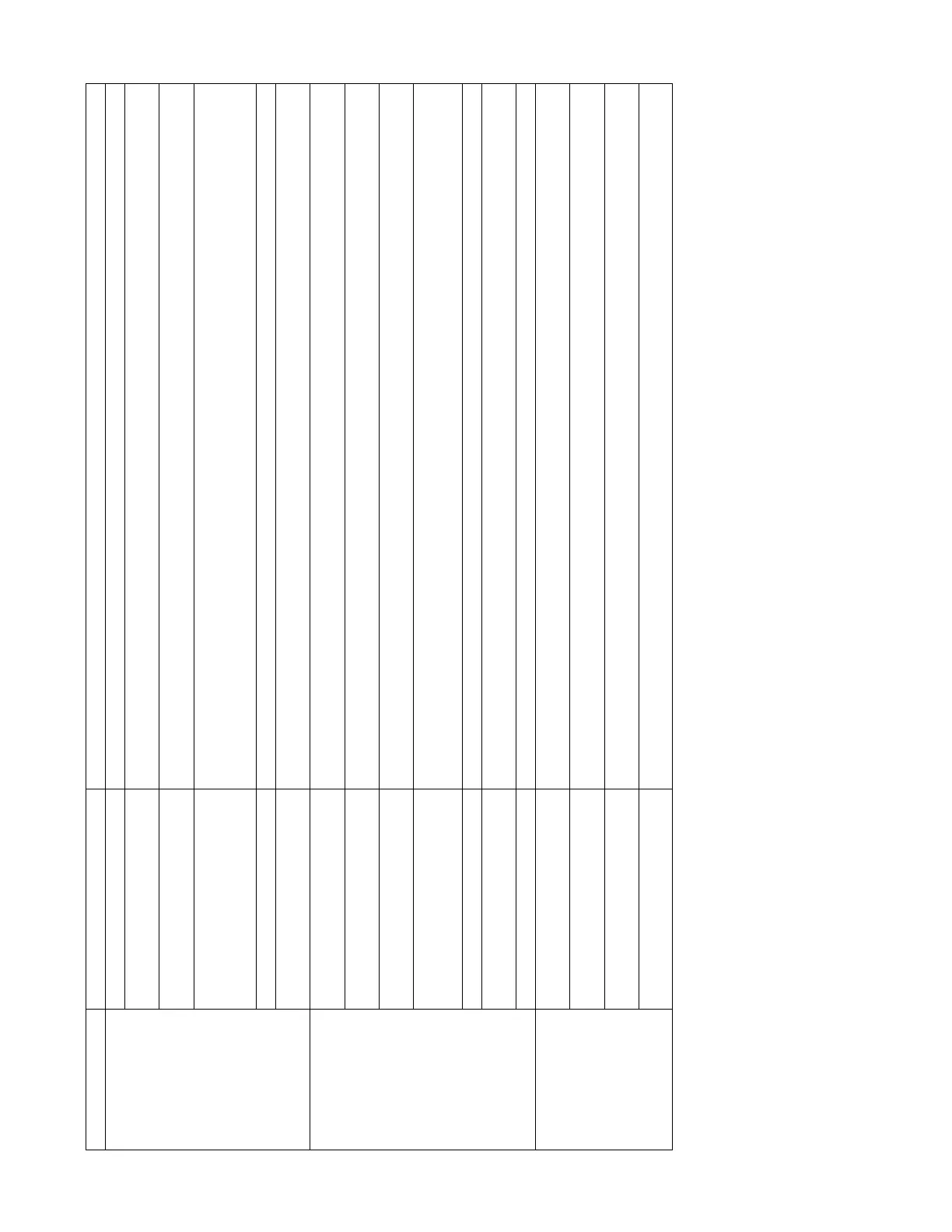TP-6953 7/19 139Section 7 Troubleshooting
7.11 Troubleshooting—Genset Controller
Symptom Potential Causes Troubleshooting
Engine does not
crank
A fault is active. Verify that E-Stop, auxiliary fault, and other latching faults are inactive before attempting to start the generator.
Low battery condition. The generator controller may reset when a crank sequence is initiated. If not, monitor the battery voltage while cranking to
ensure that it remains above 10V.
Missing, damaged, incorrect wiring
to the starter.
Verify that the starter is receiving battery voltage to the large post on the solenoid. Verify that the 71 wire to the starter
solenoid is activating when the engine is signaled to start.
Start relay is damaged or
inoperative.
Most applications drive the starter s olenoid with a pilot relay. Verify that the pilot relay is supplied with battery voltage and
that it is activating when the 71 wire output from the controller turns on.
Note: The 71 wire will appear to be supplying battery voltage if all that is connected to it is a multimeter. The multimeter must
be connected across the coil of the relay while the relay is plugged in.
Starter is damaged or inoperative. If the starter is receiving the appropriate signals, but the engine is not rotating, the starter or solenoid may be inoperative.
Engine is unable to turn. In some cases, the engine may be experiencing mechanical interference or damage that will not let it turn. Verify that the
engine will turn with a breaker bar or ratchet on the bolt in the front pulley.
Engine cranks but
does not start
Controller fault. The generator controller is stopping the engine due to a fault before the engine is able to start. Additional troubleshooting will
vary based on the fault that occurs.
Loss of fuel prime. If the engine progresses through a full crank cycle without starting, it is entirely possible that it is not receiving fuel. Manual
priming may be required to get the engine to start.
Air in fuel. A pinhole in a fuel line or a trapped air pocket f rom assembly can inhibit an engine from starting. Manual priming and
bleeding the system may be required to clear the air pocket and start the engine.
Missing, damaged, incorrect wiring
to the fuel solenoid or ECM.
If the ECM or fuel solenoid is not powered up while cranking, the engine will not be able to start. The fuel solenoid power can
be verified with a multimeter and it should click when the engine is signaled to start. The ECM is powered if the controller is
able to sense engine speed while cranking.
ECM fault code. If the ECM has a fault, it may not permit the engine to start. Further troubleshooting will depend on the fault that is present.
Damaged or inoperative component
in fuel system.
A fuel pump failure, pressure regulator failure, fuel solenoid failure, or electrical problem in a c ontrol system may prevent the
engine from starting. Refer to the engine service manual for expected fuel pressures and component checkout procedures.
Damaged or inoperative run relay. If the ECM or fuel solenoid is not receiving power, the run r elay may not be activating or making contact.
Run relay overload
Damaged or inoperative run relay. Run Relay Overload means that the current on the Run Relay has exceeded 10A for 10ms. If the coil on the run relay is
shorted, it will draw more than 10A.
Faulty component fed by 70 wire. If additional components (other than the run relay) are fed by the 70 wire from the controller, any of them could have
developed an internal short-circuit that will draw more than 10A.
Short circuit in wiring of 70 wire
from controller.
The 70 wire may be short-circ uited to ground. A multimeter between the 70 wire in P1 to the controller and ground should
indicate if a short circuit is present.
Too many devices on 70 wire. Field-installed devices that are activated by the 70 wire from the controller may cause the current draw to exceed 10A. These
devices should be powered through a pilot relay in this case.

